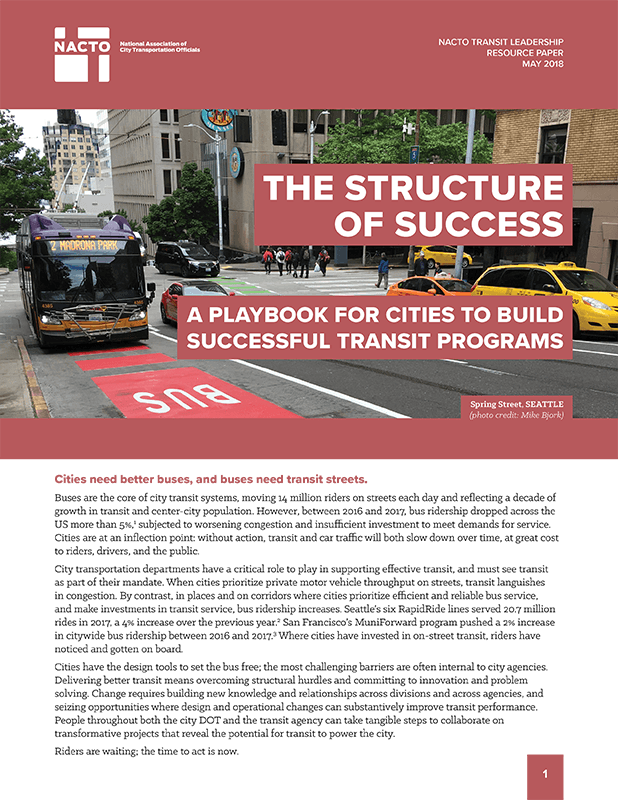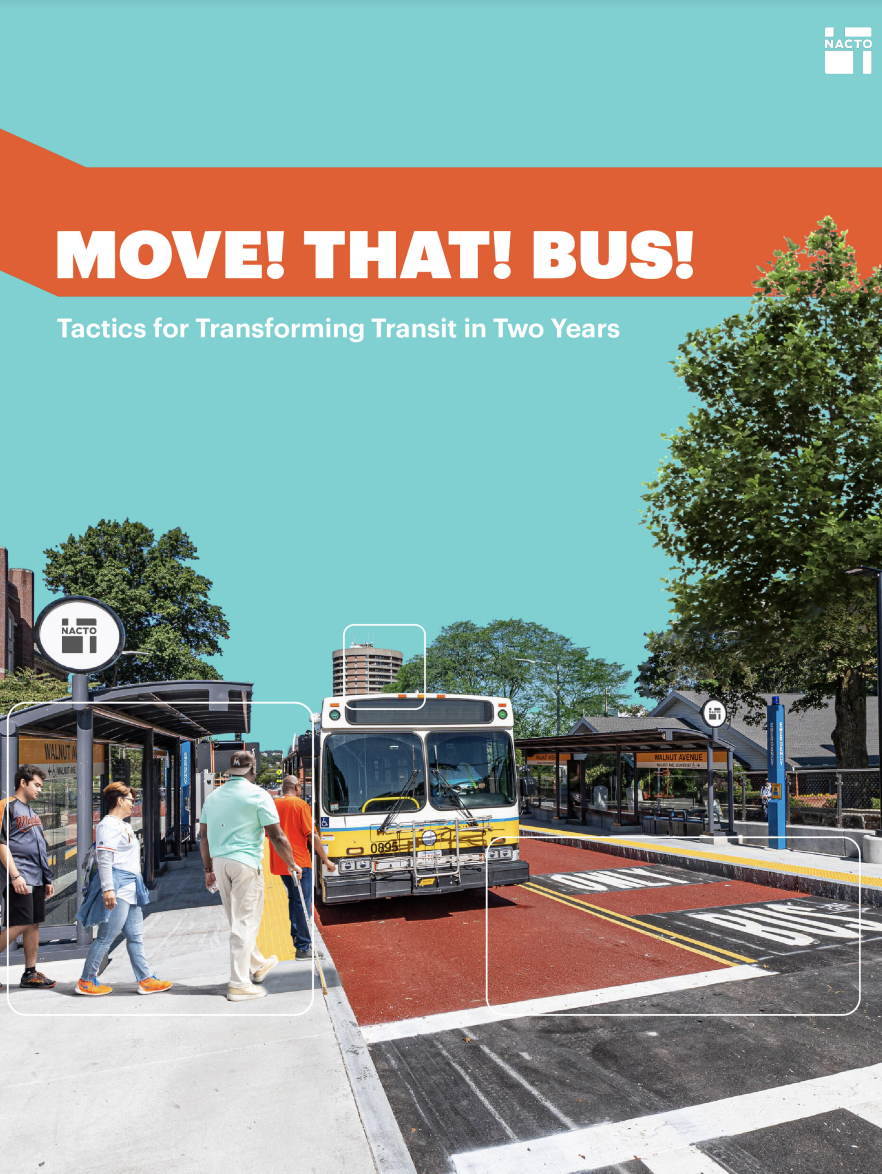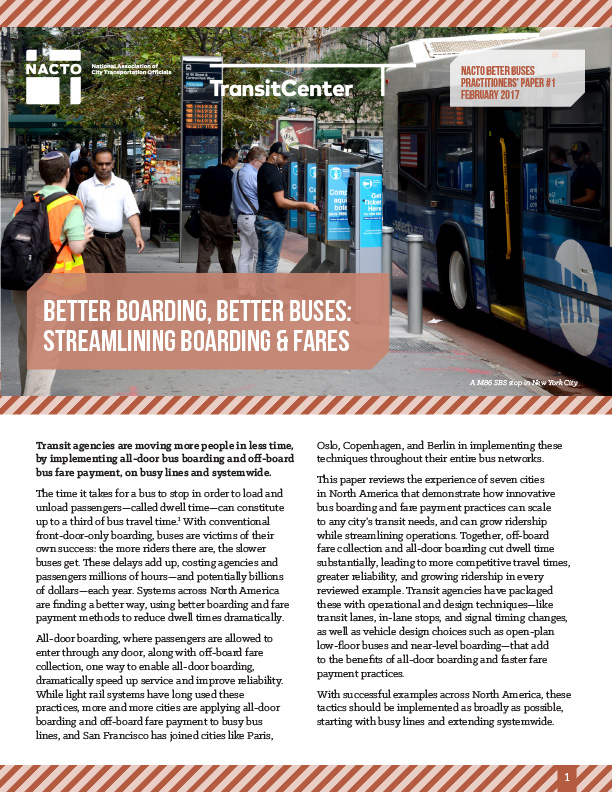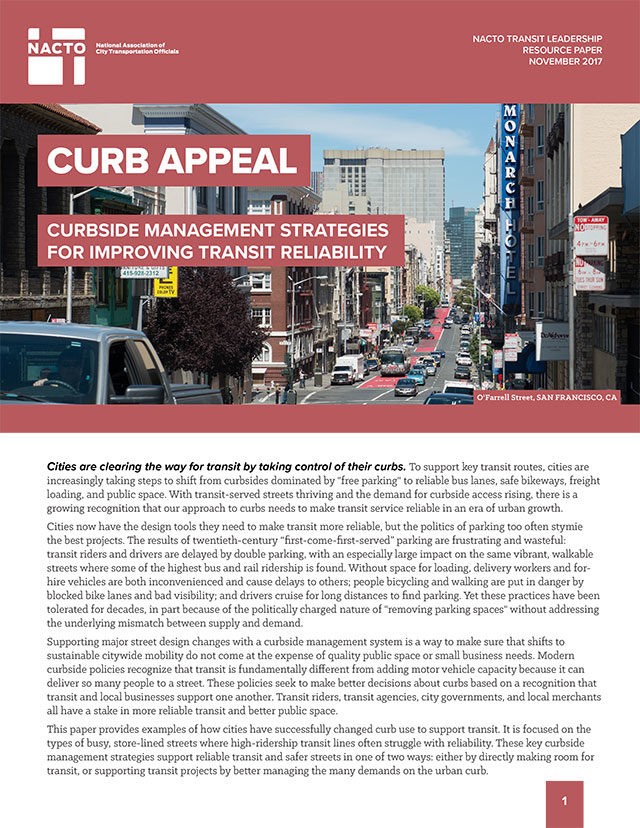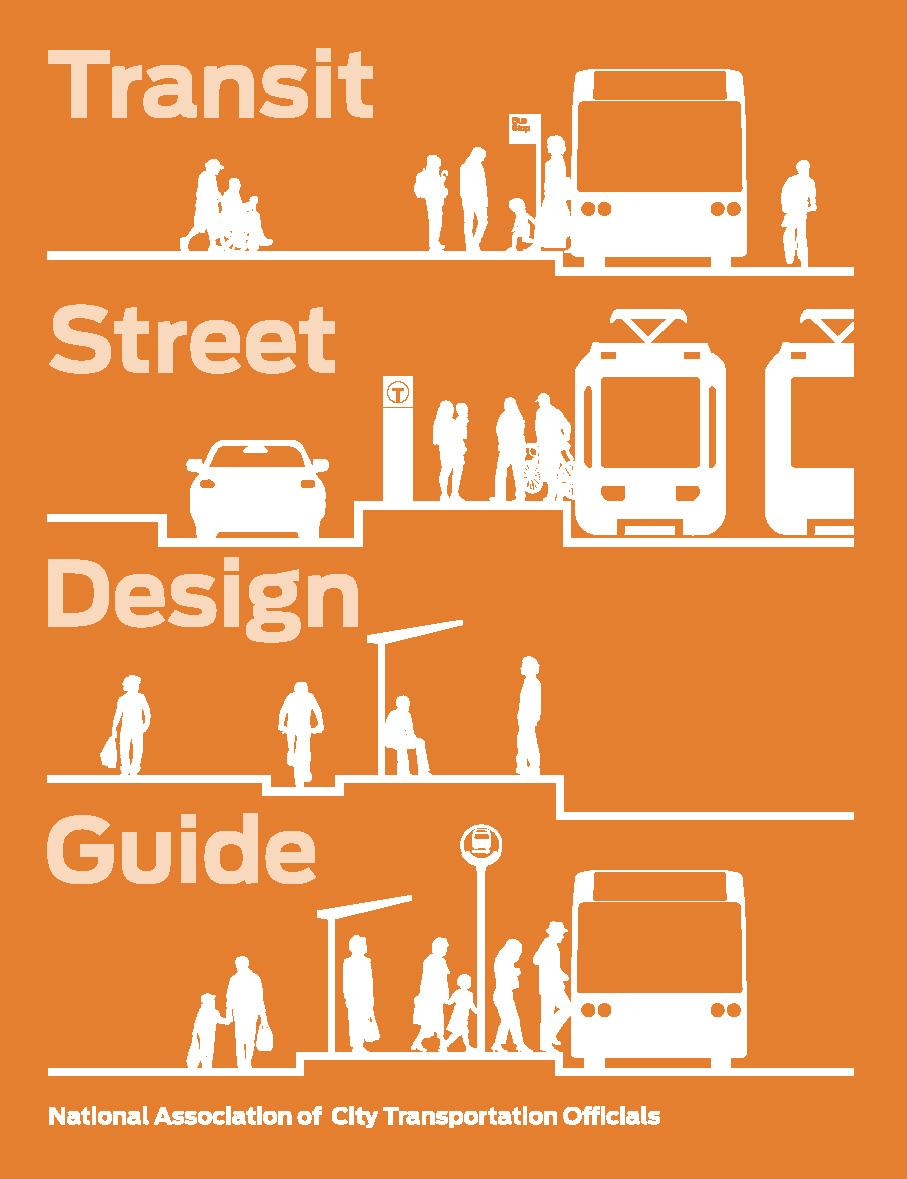City transportation departments have a critical role in building successful bus systems.
Bus networks in cities across North America are at an inflection point: while moving 14 million riders on streets each day, ridership is falling in many major cities, subjected to worsening congestion and insufficient investment to meet demands for service. Without action, transit will continue to slow down over time at great cost to customers, to operators, and to cities.
The Structure of Success—the latest NACTO Transit Leadership Paper—details how city transportation departments and their transit agency partners can overcome structural hurdles and commit to supporting effective transit. Developed for city DOTs and transit operators, the paper builds on success stories from cities that are thinking innovatively about how they work together to build effective transit street programs. From building staff capacity to deliver projects, to fully rethinking the organizational chart, this resource lays out actionable steps and strategies for institutionalizing collaboration and embedding transit performance into a department’s mandate.
Where cities prioritize efficient and reliable bus service—and make investments in it—bus ridership increases. Seattle’s six RapidRide lines served 20.7 million rides in 2017, a 4% increase over the previous year. San Francisco’s MuniForward program led a 2% increase in citywide bus ridership last year, at a time when bus ridership fell 5% nationally. Where cities invested in on-street transit, riders noticed and got on board.
Cities control the streets that buses rely on. By working hand-in-hand with transit providers, cities have the tools to unlock mobility for all.

The Structure of Success is part of NACTO’s Transit Leadership series. Developed with funding support from TransitCenter, the Transit Leadership resource papers convene key issues at the nexus between city streets and on-street transit, and provide guidance for cities, transit operators, and their partners to transform their streets and cities to support better transit for all.
Read the rest of the Transit Leadership series:
Making Transit Count: Performance Measures that Move Projects Forward
Curb Appeal: Curbside Management Strategies for Improving Transit Reliability
